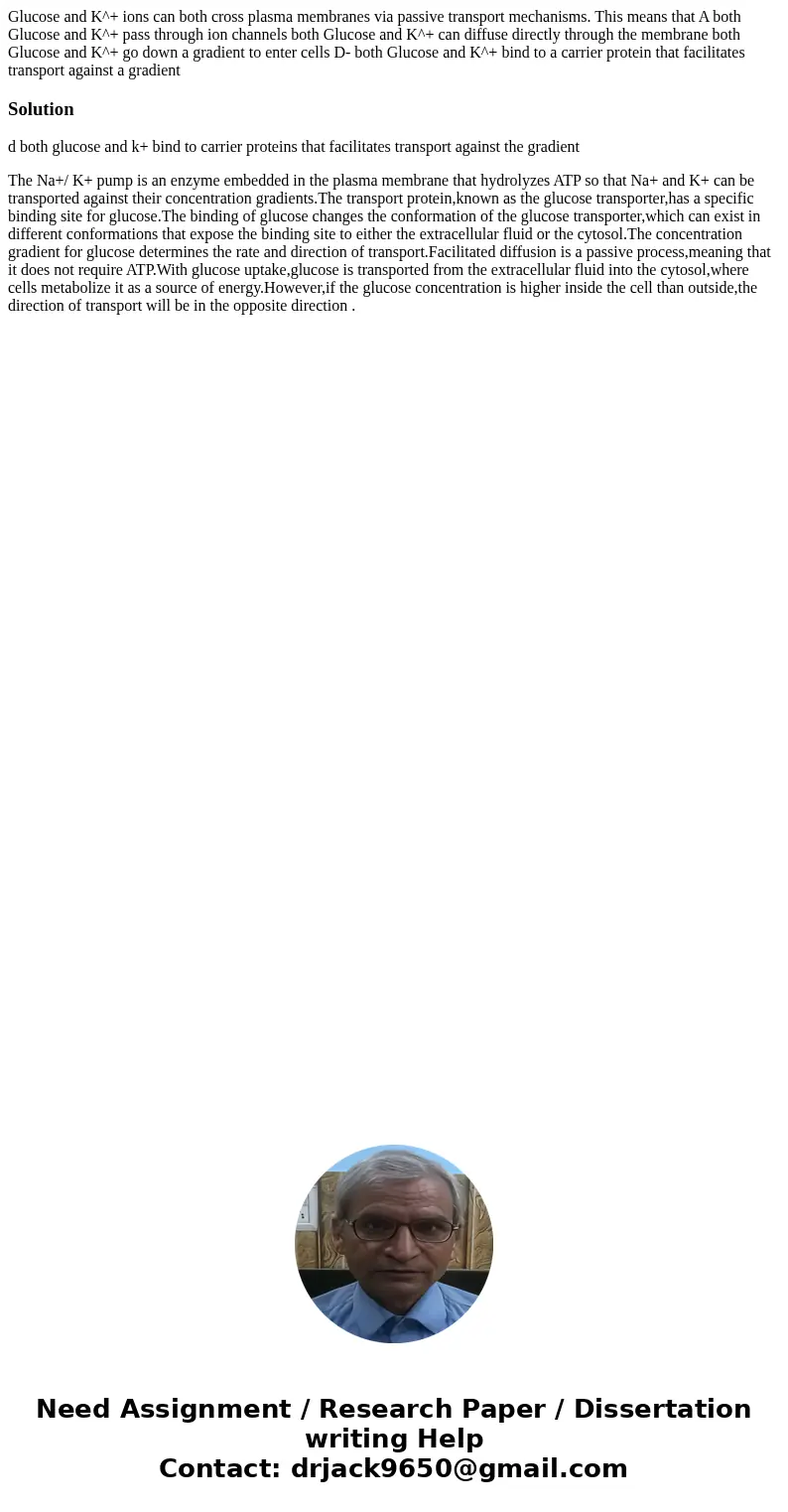Glucose and K ions can both cross plasma membranes via passi
Solution
d both glucose and k+ bind to carrier proteins that facilitates transport against the gradient
The Na+/ K+ pump is an enzyme embedded in the plasma membrane that hydrolyzes ATP so that Na+ and K+ can be transported against their concentration gradients.The transport protein,known as the glucose transporter,has a specific binding site for glucose.The binding of glucose changes the conformation of the glucose transporter,which can exist in different conformations that expose the binding site to either the extracellular fluid or the cytosol.The concentration gradient for glucose determines the rate and direction of transport.Facilitated diffusion is a passive process,meaning that it does not require ATP.With glucose uptake,glucose is transported from the extracellular fluid into the cytosol,where cells metabolize it as a source of energy.However,if the glucose concentration is higher inside the cell than outside,the direction of transport will be in the opposite direction .

 Homework Sourse
Homework Sourse